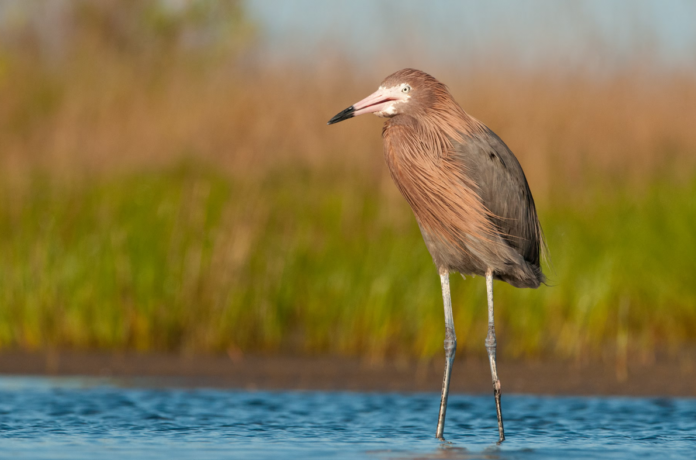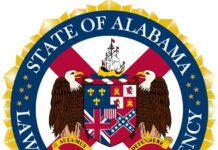
MONTGOMERY, Ala. – Restoration Plan IV with projects that address damages to Alabama’s natural resources caused by the Deepwater Horizon oil spill in 2010 has been approved by the Alabama Trustee Implementation Group of the Deepwater Horizon Natural Resource Damage Assessment (NRDA) program.
The final plan includes 11 potential coastal restoration projects. Alabama’s Trustee Implementation Group selected seven of the projects for implementation that focus on the restoration of wetlands, coastal and nearshore habitats; nutrient reduction in specific coastal waterways; birds; oysters; and outdoor recreation access. A total of $24.1 million in restoration funding has been allocated for the seven projects.
Chris Blankenship, commissioner of the Alabama Department of Conservation and Natural Resources and lead trustee for Alabama, said the final restoration plan is the result of years of hard work and dedication to the restoration of Coastal Alabama.
“I appreciate the work of Alabama Deepwater Horizon Coordinator Amy Hunter, her staff and the other NRDA Trustees for getting this plan across the finish line,” said Blankenship. “The work that will be done through Restoration Plan IV will build on work that has occurred under previous restoration plans and will have a positive impact on Coastal Alabama.”
Some of the projects to be implemented include the following:
Lower Perdido Islands Habitat Restoration – Phase II ($9,452,000)
The habitats of the Lower Perdido Islands consist of emergent marsh, unconsolidated sandy shorelines, and forested uplands, as well as adjacent submerged aquatic vegetation. These unique habitats support a diverse array of wildlife, especially shorebirds, wading birds, and waterfowl. This project aims to restore valuable coastal island habitats in the Lower Perdido Bay that support a wide variety of plants and animals. Phase II also includes the restoration of approximately 23 acres of connected coastal habitat at Walker Island, including 5 acres of sub-tidal habitat, 13 acres of scrub-shrub habitat, 1 acre of marsh habitat, and 4 acres of unconsolidated beach habitat on Walker Island. This project is expected to benefit wetlands, coastal, and nearshore habitats and many species of shorebirds and waterbirds such as tricolor heron, reddish egret, little blue heron, snowy egret, white ibis, brown pelicans, great blue heron, great egret, clapper rail, and willet.
Puppy Creek – Juniper Creek-Big Creek Watersheds Nutrient Reduction ($1,520,900)
The health of the Gulf of Mexico depends upon the health of its estuaries, and the health of those coastal waters is influenced by land uses in the watersheds of its tributaries. This watershed-scale project would restore water quality impacted by the Deepwater Horizon oil spill by reducing runoff nutrients and sediments from surrounding cropland, grassland, forest, and urban sources in Gulf waters.
Stewardship of Coastal Alabama Beach Nesting Bird Habitat ($4,740,456)
The Gulf Coast supports a wide variety of coastal bird species throughout the year by providing nesting grounds during the summer, a stopover for migrating species in the spring and fall, and wintering habitat for numerous species that breed elsewhere. This project aims to improve the status of beach nesting birds and expands upon previous shorebird restoration efforts to reduce human disturbance to and predation of nests and chicks to increase productivity of those species.
Improving Resilience for Oysters by Linking Brood Reefs and Sink Reefs ($2,800,000)
This project aims to increase oyster abundance and resilience in Alabama waters by creating a network of brood and sink reefs over a range of habitats and salinities. The project is expected to have a wide range of benefits to nearshore and coastal marine resources. A healthy network of oyster reefs would restore the ecosystem services that oysters provide, including improved water quality through filtration, shoreline, and estuarine habitat protection through attenuation of wave energy, support recreational oyster harvesting, and provide food and habitat for reef-dwelling species of fish and shellfish and the species that prey upon them. This project builds on more than $7,000,000 in oyster restoration work that was approved by the NRDA Regionwide Trustee Implementation Group. Commissioner Blankenship represents Alabama on this group as well.
Oyster Grow-Out and Restoration Reef Placement ($1,369,827)
This project will install up to 15 dense spawning aggregate structures over a 5-year period and include monitoring of those structures. Over the long term, if this project is successful, it would lead to the development of new restoration methods that would broadly benefit the health of Alabama’s coastal and estuarine ecosystems. Oysters are an ecological keystone species, and successful restoration of oyster reefs through improved survivorship would provide habitat for a diversity of marine organisms, provide structure integrity to reduce shoreline erosion, and improve water quality.
Two Recreational Use projects were also approved.
The final restoration plan is the culmination of a year-long review of all projects analyzed in previous restoration plans developed by the Alabama and Regionwide Trustee Implementation Groups and by the Deepwater Horizon Trustees during early stages of coastal restoration efforts.
The projects included in the final plan were chosen because of their potential to provide restoration benefits to Coastal Alabama if continued or expanded upon. Eleven preferred and non-preferred alternatives were included in the Draft Restoration Plan IV and Environmental Assessment, which was released for public review and comment in June 2024. During the public comment period, more than 3,500 comments in support of the projects in the plan were submitted. The final plan aims to partially compensate the public for injuries to natural resources and resource services in Coastal Alabama caused by the Deepwater Horizon oil spill.
A copy of the full report, “The Final Restoration Plan IV and Environmental Assessment: Wetlands, Coastal and Nearshore Habitats; Nutrient Reduction; Birds; Oysters; and Provide and Enhance Recreational Opportunities,” can be found at https://gulfspillrestoration.noaa.gov/media/document/alabama-final-rp4.


















